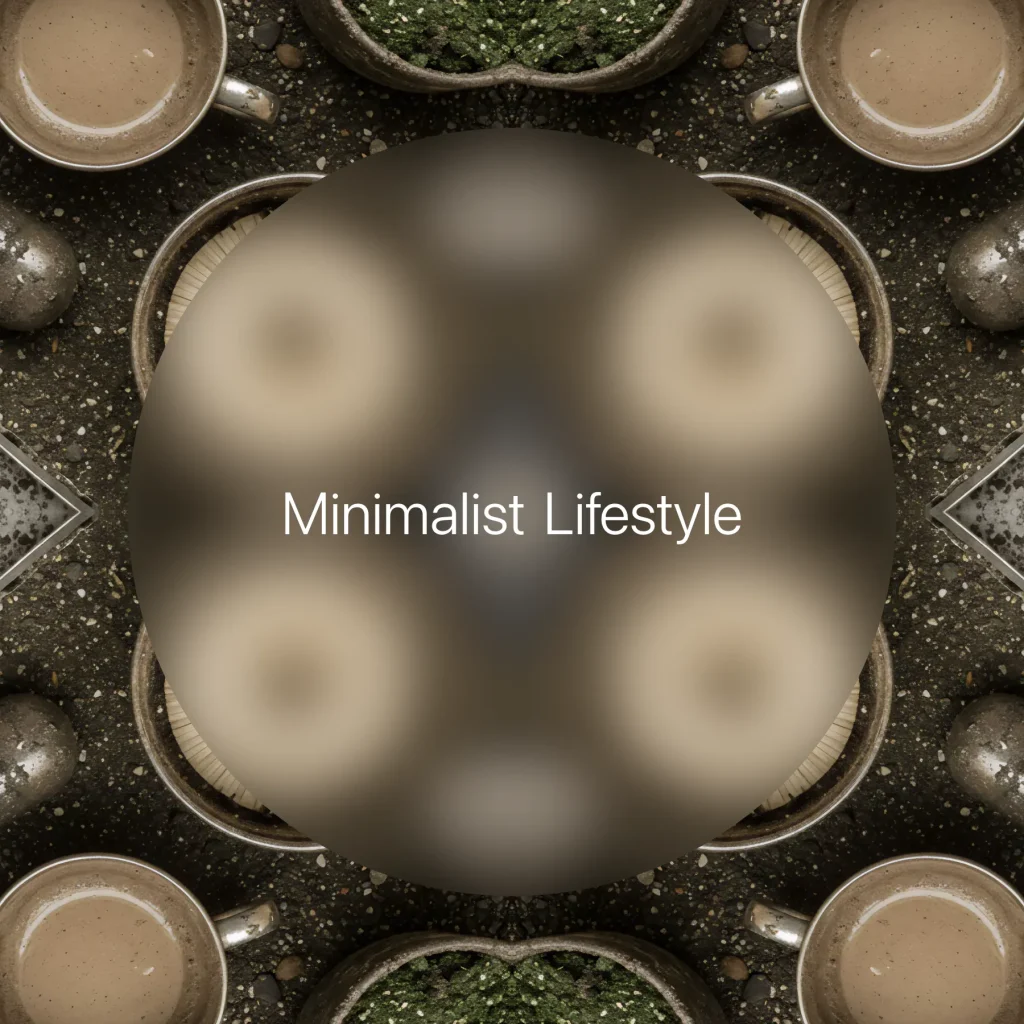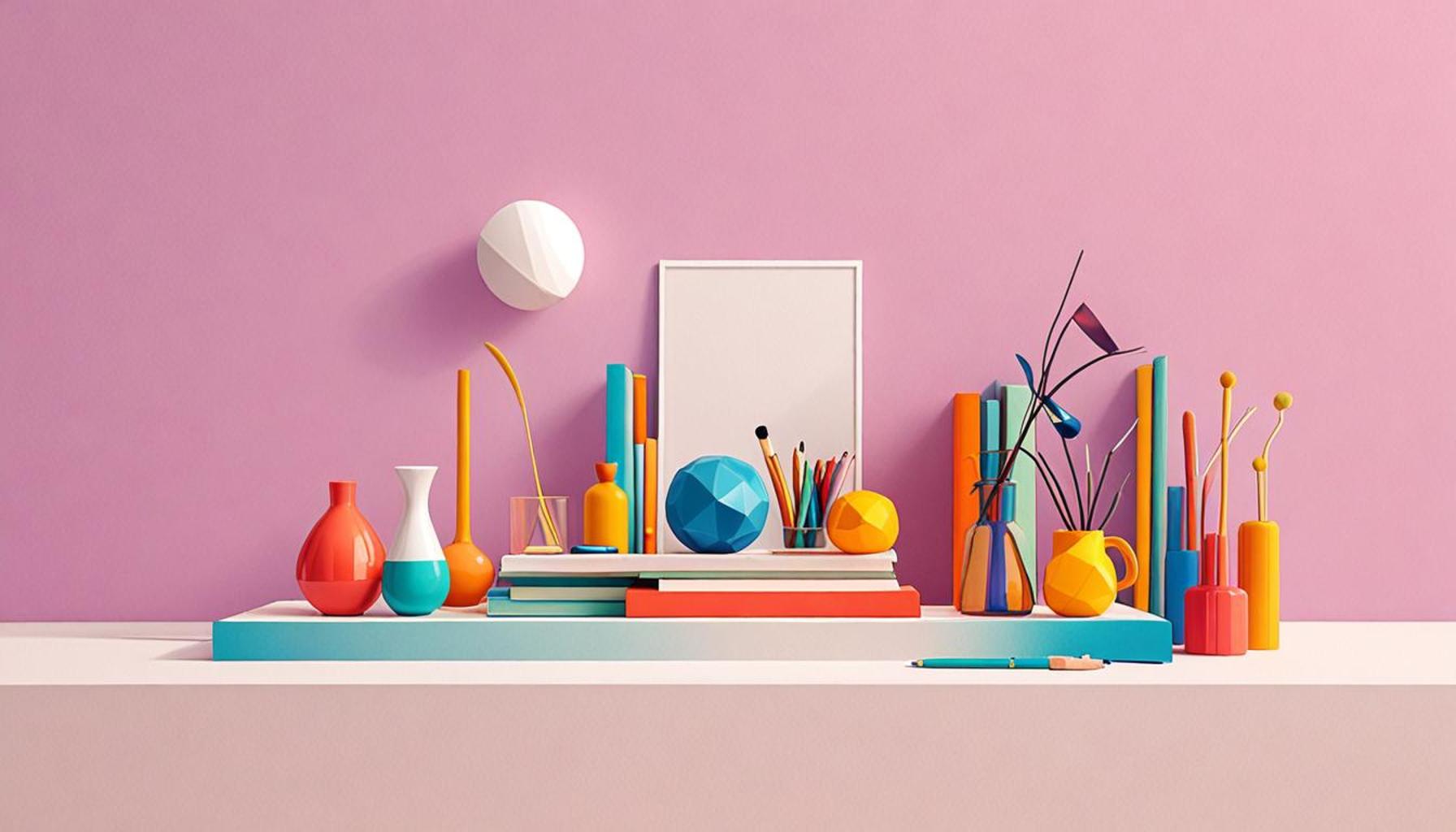How Intentional Design Can Facilitate the Transition to a Minimalist Lifestyle

Understanding Minimalism Through Intentional Design
As society continuously grapples with the incessant pull of consumerist culture, a growing number of individuals find themselves enchanted by the principles of minimalism. Intentional design serves as a fundamental pillar in embracing this lifestyle, allowing for not just the reduction of possessions, but also the cultivation of environments that foster tranquility and efficiency. This approach encourages a shift from mindless accumulation to thoughtful curation, transforming not only our spaces but our overall well-being.
The allure of minimalism offers profound benefits that can significantly impact daily living:
- Improved Mental Clarity: A decluttered space naturally promotes a decluttered mind. Studies suggest that physical clutter can overwhelm the brain, leading to stress and decreased productivity. By simplifying our environments, we allow mental energy to flow more freely, fostering creativity and problem-solving.
- Increased Focus: With fewer distractions vying for attention, it becomes easier to hone in on tasks that matter. For instance, a simplified home office can enhance concentration and efficiency, allowing for greater achievements in our professional lives.
- Simplified Living: Prioritizing experiences over possessions leads to deeper fulfillment. According to research, people who invest in experiences, such as travel or education, often report higher satisfaction than those who accumulate material goods.
Intentional design transcends mere aesthetics; it is thoughtful and strategic, centered around functionality and purpose. To bring minimalism to life, consider these transformative design strategies:
- Decluttering Strategies: Techniques such as Marie Kondo’s KonMari method provide a systematic approach to decluttering, focusing on retaining items that “spark joy.” This method not only assists with decision-making but also helps in redefining personal values regarding ownership.
- Functional Furniture: Opt for multi-purpose furnishings that optimize space without sacrificing style. For example, a storage ottoman can serve as a seat, a footrest, and a repository for blankets. Such versatility is especially beneficial in smaller living spaces typical in urban environments.
- Choosing a Color Palette: The hues you select dramatically influence mood. Soft neutrals, for instance, create a serene atmosphere, while dark colors can invoke feelings of heaviness. By implementing a calm color scheme, homes can evoke tranquility and invite relaxation.
As the pursuit of freedom from material burdens becomes more prevalent, understanding how intentional design can facilitate a minimalist lifestyle is increasingly vital. By thoughtfully arranging our surroundings and reducing excess, we not only create physical spaces conducive to peace but also enable a more meaningful existence. Embracing this design philosophy is not merely about a trendy aesthetic; it is about fundamentally reshaping how we interact with our environments and, ultimately, with ourselves.
DIVE DEEPER: Click here to discover innovative storage solutions

Designing Spaces for Simplicity and Clarity
In a world where possessions can often feel overwhelming, the role of intentional design in achieving a minimalist lifestyle is becoming increasingly significant. By focusing on the purposefulness of our surroundings, we can consciously create spaces that not only look aesthetically pleasing but also serve to eliminate distractions and promote mindfulness. The first step in this journey toward minimalism starts with reassessing what we surround ourselves with and why.
One foundational concept in intentional design is the idea of functional simplicity. This means that every item in a living space should have a clear purpose and contribute positively to daily life. For instance, using a dedicated workspace can enhance productivity, but allowing clutter to accumulate can hinder both focus and motivation. By selecting only those items that truly serve our needs, we can cultivate an environment that encourages efficiency and creativity.
To facilitate this transition, here are several essential strategies to consider:
- Assess and Evaluate: Take a comprehensive inventory of your current possessions. Consider whether each item is used regularly and if it serves a meaningful purpose in your life. This assessment can spark deeper questions about consumption and ownership.
- Emphasize Quality Over Quantity: Investing in fewer, high-quality items rather than a multitude of cheaper alternatives not only reduces clutter but can enhance overall satisfaction with your living space. Choose items that you love, and that adds value to your life.
- Create Designated Zones: By organizing areas based on specific activities—such as work, relaxation, and socialization—you can streamline your home environment. This not only makes day-to-day living easier but also reinforces the principle of functionality.
Moreover, the impact of natural light in intentional design cannot be overstated. Good lighting transforms spaces, making them feel open and tranquil. Homes that capitalize on natural light through large windows or open floor plans can evoke a sense of spaciousness that complements the minimalist ideology. By merging interior design with elements from nature, such as plants and natural materials, one can create a serene atmosphere that further emphasizes simplicity and relaxation.
Intentional design is also about weaving a narrative through the items we choose to keep in our spaces. This narrative should ideally reflect our values, lifestyle, and aspirations. Each piece of furniture or décor has the potential to tell a story; thus, being mindful of these narratives can lead to a greater appreciation for what we choose to maintain in our lives. As we curate our environments with this mindset, we not only elevate our physical spaces but also enrich our inner experiences, making the journey toward minimalism all the more rewarding.
In conclusion, embracing intentional design as a tool for transitioning to a minimalist lifestyle requires thoughtful consideration of our choices. The benefits of a well-designed space extend beyond aesthetics—it’s about nurturing a life that prioritizes clarity, purpose, and peace.
| Advantages | Impact on Minimalist Lifestyle |
|---|---|
| Enhanced Clarity | Intentional design provides a clearer visual space, allowing individuals to focus on essentials. |
| Functional Aesthetics | Incorporating beauty without the excess helps promote a sense of calm and tranquility, central to a minimalist approach. |
| Positive User Experience | Well-designed environments reduce decision fatigue, making lifestyle choices more effortless. |
| Harmonious Living | Intentional design fosters a connection between individuals and their space, encouraging a sustainable lifestyle. |
The relationship between intentional design and minimalism is profound, intertwining functionality and emotion in a way that resonates deeply with lifestyle aspirations. By focusing on enhanced clarity, the aesthetic appeal simplifies environments, supporting ease in decision-making and bringing tranquility through organization. As individuals engage with their homes or working spaces, the transition becomes more than just about reducing clutter; it evolves into harmonizing personal values with physical surroundings.Functional aesthetics ensure that beauty coexists with practicality, reinforcing that minimalism isn’t merely about what is eliminated, but also about what is celebrated. Each element of design strategically chosen retains significance, promoting a lifestyle where love for one’s space encourages sustainability. Intentional design not only aligns with minimalist principles but becomes a catalyst for transforming daily routines into meaningful experiences.
DISCOVER MORE: Click here to unlock the secrets to enhanced productivity
Mindful Organization and Thoughtful Décor
As we delve deeper into the relationship between intentional design and minimalism, it becomes clear that organizing and decorating with purpose is equally vital. Mindful organization helps to systematically eliminate clutter and enables us to make space for the elements that truly matter in our lives. This approach aligns seamlessly with minimalist principles, fostering environments that support mental clarity and emotional well-being.
One practical method of achieving mindful organization is implementing the KonMari Method, developed by Marie Kondo. This technique encourages individuals to categorize their belongings and keep only those that “spark joy.” By thoughtfully evaluating each item’s emotional significance, people can cultivate a space that reflects their true selves while discarding unnecessary belongings. This method aligns perfectly with the ethos of intentional design, as it emphasizes the functional and emotional value of possessions.
Alongside organization, the choice of décor plays a pivotal role in achieving a minimalist aesthetic. Employing a neutral color palette can create a calming atmosphere and promote a sense of spaciousness. Soft whites, greys, and muted earth tones not only conjure tranquility but also provide a perfect canvas for showcasing select decorative elements that embody personal meaning. Vases, artwork, and natural textures can all share a narrative that underscores the homeowner’s values, further amplifying the impact of intentionality behind each design choice.
Moreover, it is essential to consider the power of multifunctional furniture in intentional design. Items such as convertible sofas, storage ottomans, or wall-mounted desks maximize utility while minimizing space. These functional pieces reduce the number of objects needed in a room, allowing for a streamlined yet functional environment. For instance, a coffee table that doubles as storage can help eliminate visible clutter while maintaining an inviting and relaxed ambiance. Adopting multifunctional furnishings embodies the essence of minimalism, encouraging the integration of design and practicality.
Another key element within the context of intentional design is the incorporation of technology mindfulness. As modern living relies heavily on various digital devices, integrating smart home technology can also support a minimalist approach. Innovations such as smart lighting and thermostats can help in maintaining a clutter-free environment by eliminating excess wires and cords, enabling sleek organization. Additionally, apps that promote task management and prioritize essential activities allow individuals to remove distractions, thus fostering a focused and serene home atmosphere.
Additionally, intentional design extends beyond the confines of personal living spaces. Community spaces, co-working environments, and public areas can also adopt principles of minimalism to enhance user experience. For example, coffee shops and co-working spaces designed with open seating arrangements and natural materials encourage social interaction and foster creativity. By promoting simplicity in design, these spaces can resonate with a wider audience, inviting them to appreciate the beauty of minimalism in everyday life.
Through the lens of intentional design, the transition to a minimalist lifestyle is not merely about reducing physical possessions; it embodies a conscious choice to shape our environments—both personal and communal—into spaces that nurture well-being and foster purpose.
DISCOVER MORE: Click here to learn about emotional decluttering
Conclusion
In conclusion, the integration of intentional design into our living spaces serves as a powerful catalyst for embracing a minimalist lifestyle. By thoughtfully curating our belongings and meticulously organizing our environments, we not only clear physical clutter but also create mental space for the things that truly resonate with us. The KonMari Method exemplifies how emotional attachment to items can lead to a more meaningful selection of possessions, fostering a deeper connection to our surroundings.
Moreover, the strategic use of neutral palettes, multifunctional furniture, and technology mindfulness invites tranquility and functionality into our lives. As we adopt these elements, we refine our space into a serene haven that supports productivity and well-being. The effects of intentional design extend beyond individual households; public and community spaces can embrace minimalism to enhance user experience and cultivate harmonious environments that promote social interaction.
Ultimately, the transition to minimalism is not solely about the reduction of items but a deliberate choice to shape our environments in ways that reflect our values and priorities. This approach encourages us to live with purpose, embracing simplicity as a pathway to clarity and peace. As the movement toward minimalism continues to gain traction, let us explore how intentional design can empower us to create spaces that not only meet our needs but also nurture our essence and enrich daily living.


